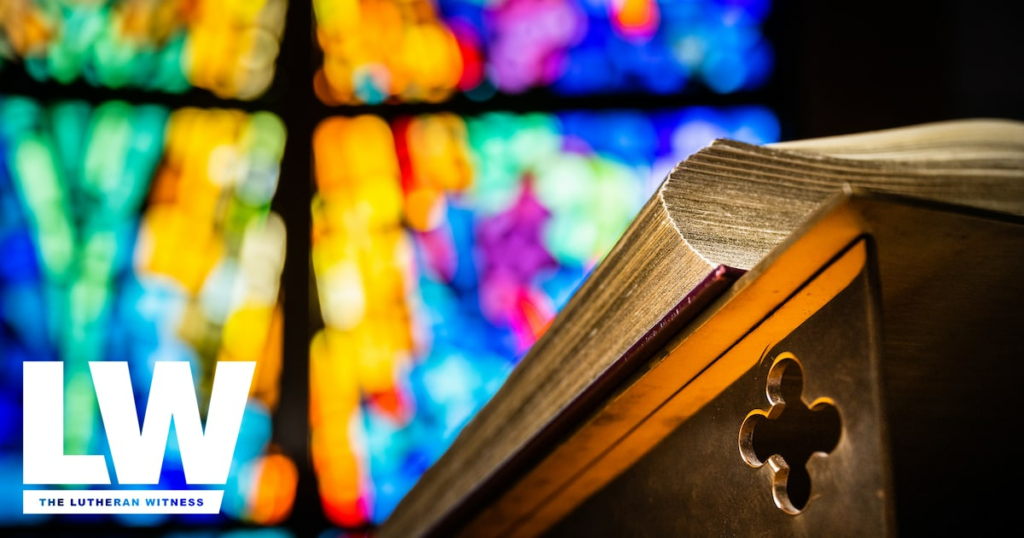by Kim Plummer Krull
Helping congregations bring neighborhoods back to life by sharing Christ’s love: That’s one simple way to describe the work of Lutheran Housing Support (LHS), say Deborah Rutt and Nicole Ridley. But the challenges these women tackle are anything but simple. “We work with and walk alongside congregations as they work to renew their communities,” says Rutt, vice president of Fund Development with the nonprofit corporation that expands the LCMS housing ministry tradition. Ridley serves as project director.
Established by LCMS World Relief and Human Care in 2004 as the LCMS National Housing Support Corporation, LHS connects LCMS congregations, districts and Recognized Service Organizations with expertise and financial resources to help revitalize neighborhoods and provide affordable housing.
Rutt previously worked in development for Concordia Theological Seminary, Fort Wayne, Ind., and as a missionary in Guatemala with her husband, Dr. Douglas Rutt, now director of International Ministries with Lutheran Hour Ministries. Ridley is a 20-year community development veteran. She and her husband, James Ridley, are members of Redeemer Lutheran Church, Fort Wayne.
The following is an edited Lutheran Witness (LW) interview with Rutt (DR) and Ridley (NR):
LW: Ever since an EF5 tornado decimated 8,000 homes in Joplin, Mo., in May, Immanuel Lutheran Church has been helping people whose lives were turned upside down. How is LHS helping?
NR: Immanuel Lutheran Church is providing a wonderful ministry of reaching out to its neighbors with Christ’s love. Now the focus is on rebuilding Joplin. We met with Immanuel’s pastor, the Rev. Gregory Mech, and other church and LCMS ministry leaders in August to explore ways the congregation can find its special niche and meet needs, such as the huge need for affordable housing. We’re exploring how LHS might provide assistance, such as providing funds for projects that Immanuel tackles, helping the congregation leverage additional local resources and helping Immanuel identify and pull together the best project partners, in the community and beyond.
LW: LHS works with LCMS congregations in the inner city as well as rural communities. Tell us about one project that’s especially exciting right now.
NR: We’re working to revitalize the College Hill neighborhood of north St. Louis, Mo., a once-vibrant community that has deteriorated over the years. LHS is partnering with St. Paul Lutheran Church, a longtime College Hill fixture, as well as residents and key community and business groups. By acquiring grants, we’ve helped repair and rehab homes and launch neighborhood beautification projects. One of the most popular is a community vegetable garden that supplies residents with fresh produce. LHS has brought together homeowners and other stakeholders to address community needs, including the introduction of police foot patrols and surveillance cameras. Efforts have helped lead to a 46 percent drop in crime.
LW: When a congregation asks for help, what do you say about how LHS can assist?
NR: LHS connects congregations with grants and loan programs and helps identify additional private and public funding sources. Homeownership is one part of bringing a neighborhood back to life. We work with congregations to make the dream of homeownership a reality in their neighborhoods. We bring together congregation members, residents and business and civic leaders to build relationships so we can all work together to rebuild communities. In many neighborhoods, the church is the last anchor of hope. We help keep that anchor in place.
LW: You, Nicole, have been involved with the revitalization project spearheaded by St. Peter Catholic and Zion Lutheran churches, first through your community development work in Fort Wayne and now through LHS. Describe that project’s impact.
NR: Prior to the St. Peter/Zion Project, this neighborhood was the second poorest tract in Indiana, according to census data. Faith-based work has made sweeping changes, transforming a troubled, decaying area into a 10-block revival of unprecedented scope. The neighborhood now includes 17 new and 15 rehabbed homes, with a new Urban League headquarters, library and Head Start campus. The St. Peter/Zion Project team coordinated with city leaders on other improvements, including new curbs, sidewalks and upgraded street lighting. A former Catholic school has been renovated into senior housing. Zion Lutheran built a new fellowship hall, and the church maintains a beautifully landscaped pocket park. LHS continues to provide technical assistance and most recently granted funds to help rehab another dilapidated house. This dramatic transformation was driven by church leaders, including our Synod president [Rev. Dr. Matthew C. Harrison, who once served as Zion’s pastor], and is a great example of how congregations can turn around a dying neighborhood with the love of Christ.
LW: If someone questions why the church is involved with challenges such as neighborhood renewal and affordable housing, how do you respond?
DR: As Christians, we are called to “Love your neighbor as yourself” (Matt. 22:39). Many people think mission fields exist only in other countries. But we also have opportunities to reach out with Christ’s love in neighborhoods in the United Statesin struggling, inner-city neighborhoods as well as rural communities. Instead of simply watching as a church closes its doors, we work to help that congregation strengthen a troubled community and share His mercy with neighbors in need.
—
> To learn more about Lutheran Housing Support, visit www.lcms.org/lhs
About the Author: Kim Plummer Krull is a member of St. Paul’s Lutheran Church, Des Peres, Mo.
October 2011






